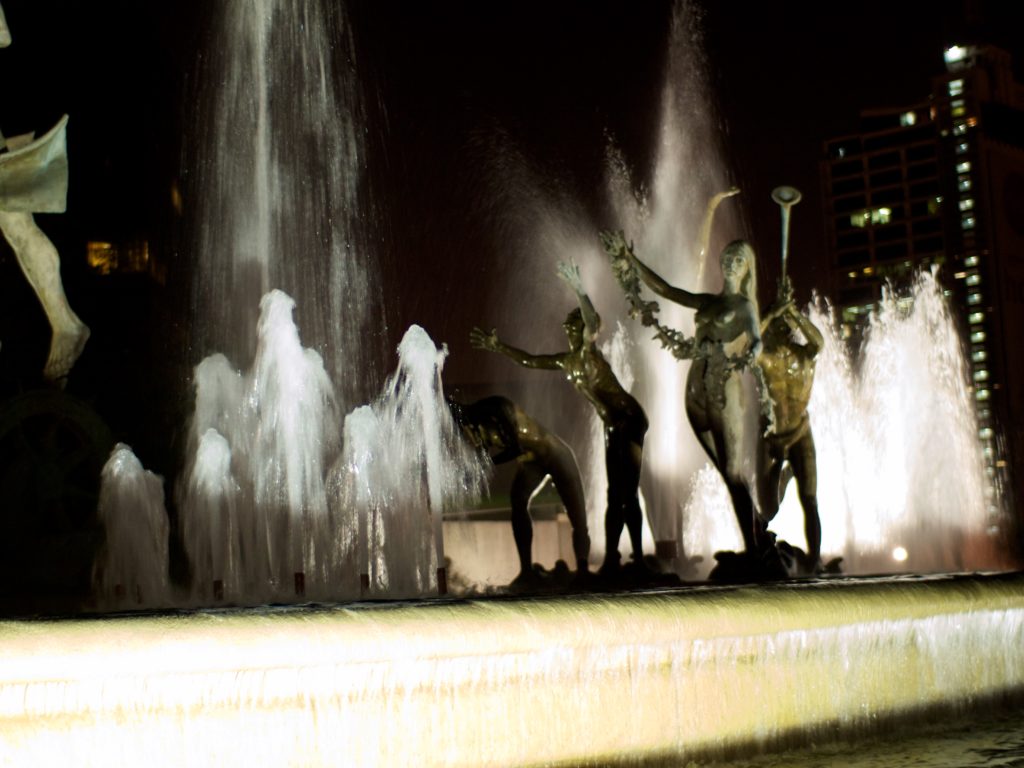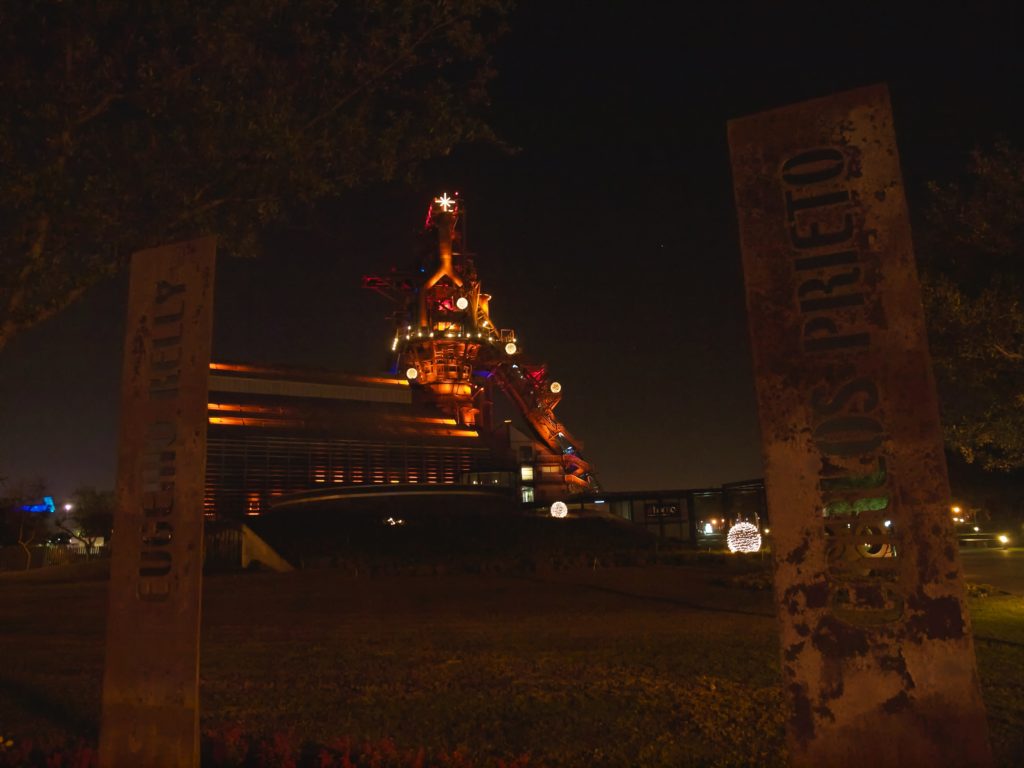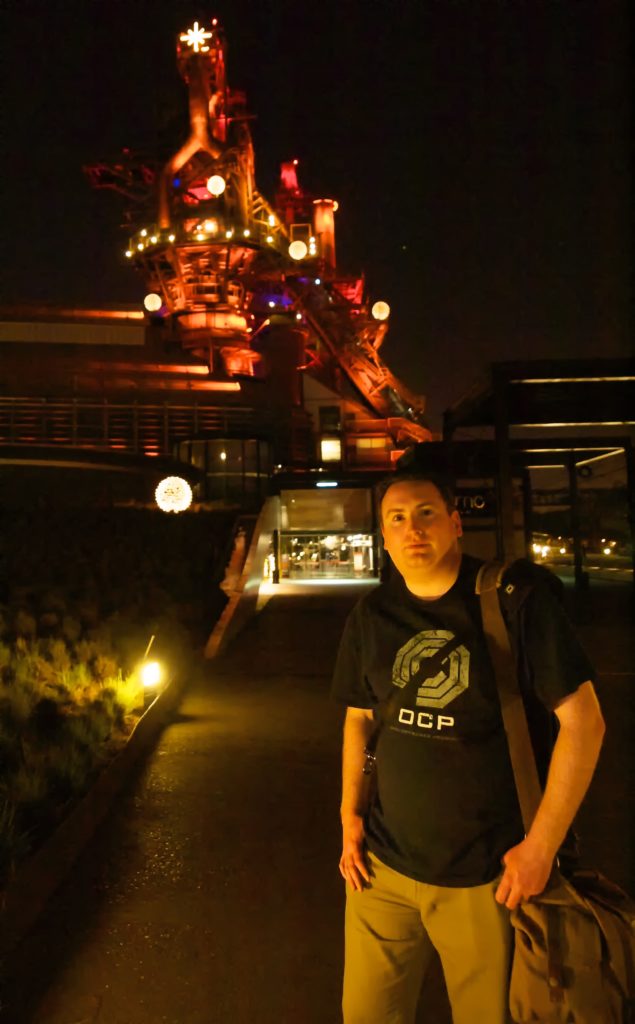



























I enjoyed this game well enough when playing it, but given a few days distance to let it percolate through my mind, I find myself nearly apoplectic with incandescent fury, or at least slightly peeved. Here are a few of the reasons why. Much of this was prompted by a similar rant over at Arcadian Rhythms.
There was a tremendous amount of PR hay made at the outset of the series about your decisions in the first game effecting the rest of the trilogy, and you character having a consistency across all the games. Odd then, that the first thing you do on starting a new game is reset your character. Even if you decide to keep your original character appearance and character class, there’s no reason for your alignment (your paragon / renegade scores) to be reset.
I don’t mind, really, completely changing all of the combat mechanics. If you want to re-jigger the powers and weapons to make the hiding behind endless low walls and shooting over them a little better, knock yourselves out, although that’s always been the absolute least of the reasons I liked ME1. Just do it silently and we’ll all be polite and not draw attention to it. Don’t, however, then try and write a bafflingly stupid Codex entry trying to retcon these, because it’s insulting. Every gun in the entire universe was remodelled based on a Geth technology apparently uncovered in the first game, but never seen in the first game, in a mere two years? Do one.
While we’ve got our retconning shoes on, what in the hell is going on with Cerberus? The bulk of the interesting sidequests in ME1 were based around establishing Cerberus as an unalloyed, inexcusable evil. It’s at least one game too late to be making excuses for them, and forcing us to accept that they’re just a misunderstood gang of folks wanting to save mankind, jus’ like you, Shep!
Let’s run down what we learn from the first game. Cerberus killed an Alliance officer, tried to build an army of Thorian creepers and rachni, destroyed a settlement by turning the colonists into husks, and as I’m playing with the “Sole Survivor” background, was directly responsibly for the most traumatic event in my characters life (at least, prior to what unfurls during the events of the game), killing my entire squad through Thresher Maw proxy.
My Shephard would have put a bullet in the head of your erstwhile new buddies Miranda and Jacob, and probably also himself just to deny Cerberus the satisfaction. Not even being able to mention the Sole Survivor deal to any of the Cerberus apologists is a really glaring, frustrating plot hole, of the sort that really throws doubt on how much anything I do influences anything in the game that Bioware might deem narratively inconvenient.
This might seem like nit-picking, and it is. However the more you keep having to scratch these itches the more it pulls you out of the game, and reminds you that you’re sinking forty odd hours into pushing electrons around a screen rather than doing anything worthwhile with your life.
It hurts immersion, and that was what I found so spectacular about the first game. Not the combat mechanics, and to be honest not even the main narrative. It was the well detailed characterisation, and the feeling that there’s a massive, well thought out, cohesive galaxy to explore with all the attendant alien races and mysteries.
Mass Effect 2 is about crouching behind low walls and firing over the top of them. Occasionally alien low walls, to be sure, but it’s mainly interested in running between walls, crouching and firing over the top of them. Exploration is purely there to allow mining, and that is hardly a positive.
There were certainly things wrong with the planet exploration in the Mako of ME1. The solution was, apparently, to delete them entirely and replace them with an orbital mining ‘game’. I would have loved to have been present at the meeting where it was decided that the best way to increase the Mass Effect 2’s fun quotient would be to hold down a trigger while slowly moving a cursor around until the controller vibrates, then pulling another trigger. I would bring a hammer to this meeting.
All sense of scale has gone. The universe has shrunk in the wash. I understand that there’s constraints on these things, but look at what happened to the Citadel. Events at the end of ME1 notwithstanding, it still ought to be a massive galactic hub, complete with the unwieldy navigation and endless running between sectors of the first game. Now it’s, what, three shops, a few staircases and a bar?
Everywhere else is just as bad, with any exploration or poking around ‘streamlined’ and minimised in favour of getting you back out, hiding behind walls. There’s some rationale for it, I guess, but the capital of the Krogan homeworld really ought to consist of more than ten rhino-people standing around a fire in an old oil drum, like some intergalactic hobo convention.
Characterisation has broken completely in Mass Effect 2. The Shephard I controlled in the first game would not be working with Cerberus, but there’s no choice about that – which requires some breathtaking, unbelievable head-sand interfacing from the Intergalactic Parliament, or whatever they’re called, and a complete abdication of the only responsibility the Earth Fleet Dudes, or whatever they’re called, have.
Sheppy aside, what in the hell was the point of convincing Garrus to go back to C-Sec if it’s discarded in one line of dialogue? How does the first game’s socially awkward blue archaeologist turn into the galaxy’s number 2 intelligence agent in two years? Why would I want to buy that story separately?
I’m pretty sure all of this talk of decisions from the first game effecting the second is based entirely around the bit characters from side missions who can be spoken to, and I have to pretend to remember what petty dispute of theirs I solved a couple of years ago, which make no impact on me at all.
At points I was running low on credits to purchase the upgrades littered around, so figured I would sell off some of my mineral reserves, surely impractical to hold on a small starship. Except, of course, you can’t, because there is no functioning economy in Mass Effect 2 to allow selling of the most valuable commodities in the universe. Hmmph
Okay, the more I think about this game the less I like it, so I’m now going to stop thinking about it and crack open the Deus Ex: Human Revolution disk Lovefilm have sent me.










Here’s an oddity, at least in the realms of my game-playing habits lately. I purchased a game, from a real-life bricks and mortar “shop”, as I believe they are known, and put that game inside of a game-playing device within 24 hours of the transaction, and played it for a length of time that could not be rounded down to zero in any statistically significant sense. That’s unusual, but should not necessarily be taken as an indication of quality. Regardless, my Mastermind-esque creed of “I’ve started, so I’ll finish” means that The Last Remnant becomes a prime candidate for my intermittent series of game review / journal things.
Purchasing The Last Remnant was a decision taken with almost no consideration whatsoever, which may turn out to be a mistake. Still, as part of a two for ten pound promotion with a game I actually wanted, it also wasn’t a decision that necessarily required much consideration. Indeed, by providing two paragraphs worth of blog material already, it’s gone a long way towards being considered good value for money.
My knowledge of the game was limited, more or less, to the blurb on the back of the box, and a nagging feeling that as I’ve not heard of it, it’s probably not worth hearing about. However, given that I more or less bury my head in the sand concerning all game releases these days this is not an unfamiliar state of affairs. The one undeniable fact garnered from the marketing blurb is that it’s a Japanese RPG published by SquareEnix, the 400lb gorilla of the Japanese RPG world.
I have an ongoing fascination with SquareEnix, as they’re a company that is continuously massively successful, despite making RPGs that are, in my estimation, barely playable, let alone enjoyable. Of course, these days they’re a monolithic publisher doing everything up to and including the oft-lauded Deus Ex franchise, but my feeble brain pathways still struggle to move them out of their Final Fantasy / Dragon Quest box. Statistics and sales figures would suggest I’m an outlier in this regard, but rather than do anything sensible like “stop buying their games”, I persist with the notion of picking them up cheap and attempting to work out what’s so appealing about them, to some folks at least.
Hey, everyone needs a hobby.
Well, now that I’ve got my flimsy rationale for playing this over, say, the untouched copies of Mass Effect 2 or Dragon Age out of the way, let’s dive in.
Egads! If there’s one thing that makes me run screaming from most Squeenix JRPGs I’ve tried, it’s the puzzling insistance on making the player controlled character a barely pubescent, screeching frat boy irritant. It’s afflicted most of the modern Final Fantasy games I’ve played, and in The Last Remnant the improbably named Rush is another such annoyance. If this doesn’t gets less annoying over time, I may have to rename this series …to the end of my patience.
At any rate, in our introductory cut scenes we’re introduced to Rush and his sister Irena on a remote, peaceful looking island, watching a holo-video-thing from their absent parents. They’re world-famous, respected researchers into mysterious, ancient artifacts called Remnants, massive constructions of great power that can be controlled and “bound” to individuals. The two kiddywinks barely have time to consider their situation before some wallopers fly in on a funny looking bird thingy, later revealed to be one of them there Remnants, and kidnap Irena.
There’s your motivation in a nutshell, chasing after your sister, trying to uncover who took her and why. One jump cut later and we’re with the youthful David, Marquis of Athlum, leading his army against a group of monsters. The battle is cut somewhat short when David unveils Operation Overwhelming Force, uncorking a Remnant under his control, effectively a tower-block sized instagib laser cannon. Rush stumbles into this mess, and over the course of a brief spot of tutorialising David and his generals agree to investigate this kidnapping scenario and get some answers.
Now, in terms of wandering around towns, talking to people in pubs for information, buying new kit and such this is barely any different from any other RPG you can imagine, so I’ll skip over that. Well, perhaps one exception, but I’ll get to that in due course. The battle mechanics, on the other hand, are so different from the norm that I’m not even going to attempt to describe them until I get a better handle on them. I hope this occurs soon.
Scooting through a few of the missions, which largely involve tracking down a few ultimately dead-end leads while still attempting to teach you the byzantine gameplay mechanics, leads us to uncover a few more areas to travel to, including the neighbouring town Celapaleis.
Principle storyline concern so far is that those behind the kidnapping may be linked to the Academy, the powerful body responsible for researching remnant artifacts, and also the employers of Rush and Irina’s parents, giving the whole abduction thing a patina of legality. Suspecting political machinations afoot and bristling under the demands of Celapaleis’ envoys, David plays things safe and starts taking a more circumspect look at the situation. Cue annoying ranting from annoying lead character, who decides to strike out on his own before, gratifyingly, realising he’s being a dick and besides, would have no chance on his own before he’s even left the city. Maybe this guy’s not irredeemable after all.
Speaking of leaving town, here’s the difference between this and a lot of other RPGs. There’s no real “overworld”, in the sense of traipsing around a world map to get between towns and ‘dungeons’. For the sake of brevity, let’s define a dungeon as any location you have to wander around hitting enemies with sticks until you find something/someone to advance the main story, regardless of whether it’s actually a dungeon or a ruined castle or a woodland glen or a marshmallow factory or anything else.
To move between locations, you simply tap the little used ‘back’ button on your Xbox 360 joypad (or alternative system equivalent) a couple of times to bring up a world map, and move a whacking great arrow over where you want to go. Easy enough, I suppose, and cuts out some of the busywork. After certain conversations or events, more areas become available to travel to. More unusually, tapping back once while in a town brings up a location map that’s used to travel, effectively, between town streets.
This is particularly weird in comparison to behemoths like Fallout 3 and Oblivion, where you will wander around the world and into town often with nary a loading screen to be had. Perhaps this is a limitation of the Unreal Engine used in the game, as it hasn’t helped with are the loading times which aren’t exactly snappy even after installing the game to hard drive and verging on intolerable from disk. Perhaps it’s another convenience aimed at removing time taken wandering through the backstreets to reach the shop or tavern you want to visit.
I suspect the latter, given some of the other oddities. For example, early on you meet a character in a tavern asking to deliver a letter to someone who’s wandered off into a monster filled area. Ever the helpful chap, you agree to deliver this. Without even a chance to prepare yourself, the screen fades to black and you’re deposited in the dungeon, directly in front of the intended recipient. You talk to him. He takes the letter. Everything fades to black again and you’re back in the tavern talking to the quest giver and claiming the cash reward.
While this has removed a lot of ultimately pointless button presses for me, it’s a pretty weird experience. It’s essentially removing the gaming elements from the game, to the point that it might as well just have given me the money without bothering about the whole letter idea. Admittedly at that point I might as well be entering numbers in a spreadsheet, and Excel ain’t no game. It’s striking a peculiar balance between convenience and gaming, and I’m not altogether sure if I like it or not.
I suppose I’ve dodged this for long enough. The battle mechanics in The Last Remnant are unique, to my knowledge, so I have to applaud the spirit even if I remain unconvinced about the execution. On engaging an enemy wandering around the dungeons, you are presented with something that’s halfway between the usual fight/spell/item/run selections from RPGs since the dawn of time, and something more akin to a tactical RPG, or perhaps even a variant of the Total War franchise.
You, and whatever lackeys you have hired in the Guildhalls of the world, are lumped into something called a union, although really “squad” or “battalion” would be a less confusing term. The composition of these unions is subject to various limits, for example at the moment I am limited to nine fighters in total, with a maximum of five in one union. I can form up to three separate unions. There are two types of hirelings, leaders and soldiers. As you’d expect, each union must have at least one leader, who typically have better statistics and abilities than soldiers, and currently I’m limited to a maximum of four leaders.
More oddities abound. Members of your unions share a pool of hitpoints, and you can only give them relatively vague instructions on how to attack. While the bog standards ‘Attack’ will have them all run at your enemies in an attempt to bash them over the head, the usual other options of ‘Attack with Combat Arts’ and ‘Attack with Mystic Arts’ will result in your chaps, depending on their abilities and seemingly the phase of the moon, performing a selection of either special melee strikes or magic attacks.
This is decidedly odd. It’s like giving a general idea of how your character and those nominally under his command should behave and watching how it pans out. It would be like Sonic the Hedgehog presenting an option at the outset saying “Run right, jump as required” then watching a demo of the game until completion.
Now, if this does wind up as the greyed out option on the screens imply see you controlling at least five squads of sixteen soldiers, micromanaging each individual’s actions each round would be about as dull an experience as I can imagine, so I can sorta see why it’s built this way.
However, we’re coming straight back to the issue of convenience versus gaming. Final Fantasy 12 was criticised in some circles for having an option to take essentially all decisions in battle away from you, and leave it up to the AI. The game was basically playing itself, which led people to question what the point of that was. That was, however, an option that you did not have to avail yourself of. There’s no such option here, and I do wonder how this will play out over the coming days.
Hey! Where do you think you’re going? We’re certainly not finished with explaining the game mechanics. Well, I say explain. Parts of it remain fairly opaque to me, but we’ll do what we can.
Let’s give a worked example. Say we’ve got two combat unions under our control, and we decide to take on, let’s say, five groups of oversized cockroaches. The groups start off scattered around a minimap that looks on first instance to have more tactical significance than it really does. We set our two groups to attack the nearest cockroach cluster to them, and they charge off towards them.
Our first group run headlong into their target and start bashing them up. Both parties enter a slightly mis-named state called a Deadlock, meaning that they’re engaged with fighting each other. For the sake of argument, both groups survive and remain Deadlocked.
Our other group was heading towards their target, but another closer, faster bunch of enemies engaged them first – an Interruption. They Deadlock and start hitting each other for the turn. After that, another group of enemies attack, and as you’re still engaged with fighting something else, they get to “Flank Attack” you, a state requiring less explanation than Deadlock. They get a damage bonus against you.
Of course, you have another flank to be engaged on, and if yet another group attacks it’s from behind, oo-er missus. This “Rear Attack” will hurt even more, again, oo-er missus. If another group attacks, it’s termed a Massive Strike, presumably to avoid copyright infringement with a Bristol based trip-hop outfit. So that’s all reasonably understandable. It’s often frustrating, as you intend on unleashing a series of devastating attacks on a dangerous group of enemies only to be Interrupted by a low value target, “wasting” your attack turn and potentially leaving you open to Flanks from those more dangerous opponents.
I say frustrating, because there seems to be no way to combat this. There’s no obvious way to control your position on the battleground, so it doesn’t seem like there’s any skill to this mechanic. And if there’s little or no control you can exert over this, you have to question why they make so big a point of it. There’s massive text overlays coming up on screen every time these Deadlocks or Flanks et al happen, and given that there’s very little that you can do about these situations other than the default RPG Plan One of “kill everything”, it’s just giving the trappings of a tactics system without having any actual tactics system.
Oh, yes, and the remaining major state, Raidlock, makes no sense whatsoever. The text describing it does, admittedly. A union that’s not physically close to another union can enter a special Deadlock state called a Raidlock, nominally by hitting them with some ranged magical attack, getting a damage bonus. So essentially, covering fire. Makes sense, except every single time this happens to me, seemingly at random, at most one of my team has been using a ranged attack, and the rest run up and bash them with swords. So, to be clear, a Raidlock is a state of Deadlock for units that aren’t physically close to each other but that are nonetheless physically close to each other.
People have claimed that the battle system in The Last Remnant is too complicated. Actually, the problem is far worse. It’s a battle system with all the obfuscated seeming of complication, without actually having any at all. It promises tactics and delivers helplessness, and that’s plainly not satisfying.
We’re probably up to about Day Ten or so, in reality, with the intention being to backfill in more information on the combat mechanics and a few other things I’ll get to, but I’m calling a halt to this game on account of it being more of an exercise in perseverance rather than anything I’m getting any enjoyment out of.
The last word I’ll have on the combat system will be kept relatively brief, mainly because it’s a horrible idea that you can turn off. As your squads go through the motions of attacking and defending (for the twelve millionth time), there’s an opportunity to get an enhanced result by, joy of joys, a quicktime event. There is, as we all know, no game that features a quicktime event that could not be significantly improved by removing the quicktime event, so it’s heartening to see that this can be turned off in the options. Or rather, falling back on your character’s base stats to automagically see whether you hit or miss.
The point, I suppose, was a last ditch attempt to inject some feeling of control or involvement in the battles, which never stop feeling like a spectator sport rather than something you’re nominally directing. If your solution to a lack of action is to dump endless, excruciating gauntlets of quicktime events, you know you’re getting into “nuke from orbit” territory.
So, combat-wise, it’s a brave experiment and I’m glad I’ve played it enough to form an opinion on it, but it’s a failed experiment. I’ve lost count of the number of times that I’ve would up having my parties wiped out because while it’s obviously necessary to heal up this round, my only options are to carry on a doomed frontal assault or some such nonsense. I wouldn’t mind giving up control quite so much if I didn’t feel I was giving up that control to a bumbling poltroon.
Given that any RPG is likely to be heavy on the combat, and given the usual Squeenix focus on grinding this is particularly so in The Last Remnant, it’s not going to work out very well for the game if the combat is, at its best, a total drag. So we’ve already worked out the primary reason to punt the game into the long grass and find something else to play. There are many others.
Marginally annoying, rather than outright frustrating is the resource gathering. Components, ores, herbs and the like are found either in shops, from vanquished enemies or from points around the maps, which brings us onto Mr. Diggs. With no explanation whatsoever this puzzling little steampunk mole thing attaches himself to your group to enable you to gather more resources, which means watching his canned ten second animation another four and a half billion times over the course of the game. It’s not particularly impressive first time around, and grows rapidly more grating each subsequent time. The same can be said of all the attack animations, really.
The voice acting, for the English version at least, is reassuringly dreadful. The main character is outright annoying, with the supporting characters swinging between ‘bland’ and ‘somehow worse than the lead character, baffling as that may be’. Of particular note is the bloke lumbered with David, Marquis of Athlum, who sounds like a cross between a bad David Bowie impersonation and every accent in every Guy Ritchie film thrown in an accent blender.
Perhaps the most obtuse gameplay mechanic of The Last Remnant is that it’s very often not remotely clear what you’re supposed to be doing to further the plot, and there’s also no indication that you’re well prepared enough to progress further. I came very close to knocking this on the head after, ooh, four days or so, after growing tired of the side-quests that were taking up a great deal of time while presenting no significant challenge. I wandered up to the plotline mandated fight with a Mr. “The Conqueror”, who smeared me into a fine paste in short order. Aah, I realised, this game mandates grinding. Which was a massive red flag.
Sure, I was happy doing the side-quests in Fallout 3 and Oblivion, but not because I wanted to farm experience points to get past a boss. It was because they were, for the most part, interesting stories on their own terms, and enhanced the feeling of being in a living, breathing world. There’s nothing like this depth shown in The Last Remnant, and nothing like motivation for doing them.
Even putting the wider game world to one side, the main storyline doesn’t have the attraction required to put up with the grind required to progress it. What starts off as a simple, relatable tale of a missing family member rapidly devolves into world-spanning political powergrabs featuring characters we have barely seen, let alone know anything about. The supposed Machiavelli behind all of this is so obviously guilty from the first time we clap eyes on him I suppose there’s no point building up any subtle, deceptive plots, but that doesn’t mean I’m not going to miss it.
Without liking either the story or the game’s mechanics, there’s clearly no point going any further, or longer. And I could well have gone longer – despite pumping something like forty hours into it, the point I gave up was the seemingly wide-accepted arsehole of a boss battle at the end of the first disk, which seemed very much like I’d have to firstly go back to a save from hours ago and level up more, and even then face a battle based more on luck than wits. I’m sure this timesink would have doubled from the second disk, but I don’t think I’d have enjoyed any of it.
The battles are repetitive, drawn-out and tedious, and the lengthy loading times add to the feeling that this is more a game you are invited to watch, rather than play. It still looks pretty good, I must admit, which is to its credit, but hardly its salvation.
There’s very little of interest in this game, for most folks. It may appeal somewhat to the more obsessive-compulsive crowd, or those who take interest an in studying and breaking games systems on a more cerebral level. Basically people who can understand the term “min/max character build” without requiring a flowchart.
I certainly got my money’s worth out of The Last Remnant, going by the time taken, but I’m not altogether sure I got too much enjoyment from it. I had far more fun subsequently going through Arkham Asylum, in far less time. If longevity is your only rationale for judging a game, I suppose The Last Remnant scores highly. By any other criteria, it ought to be avoided.






















































This review has been ‘repurposed’ from my other site, theOneliner.com
There’s few comedians more controversial than Chris Morris, and for my money at least, few more successful. Deftly combining scathing media and social commentary with massively amusing absurdism, often with well placed skewering of celebrity culture at the same time, he’s made the most farsighted, prophetic and damnably funny comedies of the past 20 years. After the tabloid baiting of the Brass Eye pedophile special, the only surprising element of the news that he’d decided to make a comedy about jihadi suicide bombers was that he’d taken so long to come up with it.
Here, Omar (Riz Ahmed) seemingly has enough of this decadent Western culture and decides to go on a bit of a jihad. When we meet him he’s already joined a terrorist cell, of sorts. Nominal leader is the distinctly Caucasian Barry (Nigel Lindsay), a well known and obvious crackpot. There’s also Faisal (Adeel Akhtar), who’s planning to strap explosives to his pet crows and fly them into tower blocks, to kill, in his words, “slags and Jews”. Omar’s brother Waj (Kayvan Novak) is going along for the ride, mainly because he’s outsourced most of his decision making to Omar on account of him being thicker than most planks.
Soon, it’s apparent that Omar is the only member present with the merest hint of a clue about this sort of thing, although his performance at a Pakistani training camp proves that he’s no Bin Laden himself. Returning with his tail between his legs, he nevertheless presses on with his own plan to ‘activate’ the cell and strike a blow for radical Islam. Things progress about as well as you might expect from such a gang of idiots.
I’m going to try to avoid spoiling the gags, so you’ll just have to trust me that it’s massively funny. I’m backed up on this somewhat by the quality of the guys behind it, whether we’re talking about Morris himself or the additional writing team of Jesse Armstrong, Simon Blackwell and Sam Bain, collectively responsible for The Thick Of It/In The Loop/Peep Show, at which point we’ve pretty much completed the ‘brilliant British comedy’ sweepstake.
While it’s obviously shot on a shoestring, it doesn’t look tawdry and the direction and comic performances from the entire cast more than hide this, with some exceptional delivery and timing on the lines.
It’s the lines themselves that shine though, mixing the deadly serious with the absurd in fascinating, hilarious ways. I want desperately to quote them here for the next few hundred words or so, but that wouldn’t be fair to you, as my shonkily remembered rendition of them wouldn’t be a patch on the real thing. You really owe it to yourself to hear them in their full glory.
While it’s in the main concerning itself with the absurdity of people who want to blow themselves up for their personal equivalent of Invisible Space Jesus, it’s important to recognise that this film is in no way racist. In fact, quite the opposite, as it takes more than one jab at the institutional racism of the British police force and the complete failure of their intelligence services, drawing parallels with the tragic De Menezis tube shootings some years back.
I’m sure if your looking for things to be offended by, as most of the super-fundamentalist religious fruitbats are, then you’ll find something here to offend you – but only because you are blinded to the truths of how the world sees you, and indeed how you are.
If you’re in the camp that think that Terrorism is No Laughing Matter, then I’m afraid you’re looking at entirely the wrong film and entirely the wrong reviewer. On a personal, day to day level, the only way I have of fighting terrorism is to refuse to be terrorised by it, regardless of the gleefully inflated, newspaper-shifting hysteria around it. It’s difficult to be terrorised of something when you’re busy laughing at it, which is something Morris understands and utilises to tremendous effect.
Brilliance. Go watch it.
This review has been ‘repurposed’ from my other site, theOneliner.com
Of all the films what I done have gone and watched and that at the 2011 incarnation of the EIFF, widely held to be something of a damp squib, this is the only film that I felt completely failed at what it was trying to do. As such it was the greatest disappointment, especially given the generally puzzlingly high regard it seems to generally have garnered.
Post Mortem is set in Santiago, 1973, against a background of the impending coup d’Etat that would usher in a brutal rule under a military junta. A civil servant, Mario (Alfredo Castro) working at a morgue, transcribing doctor’s reports, becomes infatuated with a cabaret artist from the theatre across from his house, Nancy (Antonia Zegers). Their peculiar relationship takes a nosedive when she goes missing, along with a great many others, during the coup. Maio tries to track her down while also trying to deal with the sudden massive influx of bodies caused by their new military overlords.
Now, this film falls flat because there only seems to be one character that’s remotely sympathetic or, for that matter, believably human, and she soon gets shot for her troubles. Everyone else, including the two nominal leads, oscillate between creepy and unlikable.
Perhaps there’s something lost in translation here. While the broad strokes are obvious enough, I struggled to get a handle on anyone’s motivations and their actions from scene to scene were often inexplicable. Perhaps I’m just not in touch with the fiery Latin temperament, but I struggled to glean any enjoyment from this at all.
The pacing is way off. If it’s trying to build tension at any point I must have missed it, and my attention wandered so much I had to call out a search and rescue party. The two main plot threads of their relationship and the atrocities committed by the junta seem almost completely separate, and I found myself as disinterested in the film as Mario seems to be in the opening reels of the film with the politics that will soon inconvenience him so.
Does, however, win the prize for the longest single shot ‘building a barricade’ scene, which is surely worth something.
This review has been ‘repurposed’ from my other site, theOneliner.com
Some would call this film “Man som hatar kvinnor”. Chiefly the Swedish, I’d imagine. Stieg Larsson’s novel gets an adaptation for the screen, and I guess it must be good, seeing as it’s been immediately picked up for an English language remake. Well, that badge of honour has become rather tarnished of late, but The Girl With The Dragon Tattoo turns out to be a pretty decent thriller.
Journalist Mikael Blomkvist (Michael Nyqvist) finds himself on the wrong end of the judge’s gavel in a libel case, sentenced to a few months in the slammer at a time apparently of his choosing. Odd. At any rate, he walks out of court and decides to distance himself from his magazine by resigning, to avoid bringing it into further disrepute. He has little chance to rest before he’s contacted by the aging ex-CEO of the Vanger Concern, Henrik Vanger (Sven-Bertil Taube).
He wants Mikael to play detective for him. Some forty years ago, his young niece Harriet vanished without a trace. The police made no headway, although Henrik suspects foul play on the part of one of his family. In the absence of anything else to do, Mikael takes up the cold case.
Unbeknownst to Mikael, a young computer hacker / private investigator Lisbeth Salander (Noomi Rapace) has been employed to keep tabs on him, but soon winds up joining him in the search to uncover what happened to Harriet. Calling Lisbeth ‘troubled’ would really be doing her a disservice. How she got into her current dark, alienated state will be a recurring sub-plot that echoes the dark secrets that Mikael unearths about the Vanger family.
As murder-mysteries go, The Girl With The Dragon Tattoo is a pretty effective one. The cinematography is, on occasion, absolutely breathtaking. The characters are interesting, well-acted and fleshed out with enough surrounding detail to avoid feeling like mere conduits for plot to run through. It keeps up a decent pace, and there’s never a dull moment.
It’s not perfect, and I think it may well be because there’s never a dull moment. I don’t think I’m being too controversial in saying that both the investigative techniques and events occurring to the investigators skate on the other side of the borders of believability. Not impossible, true, and there’s enough unpleasant people in the world doing unpleasant things to other people that nothing presented here is impossible. It’s pretty damn unlikely, though.
The genius of The Girl With The Dragon Tattoo is that it doesn’t stop for long enough to have you really think about it in any deep way. It’s also not a film that demands any deep inspection for anyone that’s not reviewing it for a website, so perhaps it’s biggest foible won’t be picked up on by most in the audience. Which is a good thing, I suppose, for everyone except me.
I enjoyed The Girl With The Dragon Tattoo whole-heartedly. There’s no point saying much more than that, and there’s also no point waiting for the Hollywood remake to go and see it.
This review has been ‘repurposed’ from my other site, theOneliner.com
I had very much wanted, and perhaps expected, to love Attack the Block, mainly because the man behind it was Joe Cornish, of Adam & Joe fame. I say fame. Perhaps the age old Channel 4 Adam and Joe T.V. show and their Radio 6 broadcast aren’t exactly the most influential slices of pop culture to the world at large, they’ve had strong influences on everyone here at theOneliner in their tender, formative years and in our view can do little wrong. Attack the Block sadly doesn’t quite meet our perhaps unrealistic expectations.
Cornish’s flick is set in the tough council schemes of Laaaahhndaaahn focusing on a group of ‘hoodies’, young thugs interrupted from their usual entertainment of mugging people when an alien lands close to them. True to stereotype, they stave its head in, or whatever it is that it has in place of a head. However, their triumphalism is short-lived, as the relatively small and harmless creature they offed is chased by a large number of its elder, angrier compadres, all gunning for Moses (John Boyega), Pest (Alex Esmail), Dennis (Franz Drameh), Jerome (Leeon Jones) and Biggz (Simon Howard).
Also mixed up in this chaos are nurse, Sam (Jodie Whittaker), victim of that there mugging, dope dealer Ron (Nick Frost), one of his customers, the hapless misplaced middle-class type Brewis (Luke Treadaway) and the crime-lord big wig of the tower block Hi-Hatz (Jumayn Hunter), mistakenly believing that this disturbance is Moses’ attempt to usurp him.
I think it might largely be my own fault that I didn’t enjoy Attack The Block. I had, for in retrospect no particularly good reason, been expecting a comedy. Sure, Attack The Block isn’t deadly serious, and there’s a few funny moments in it, but this is far from an out-an-out comedy.
It’s pitched somewhere between Alien and Assault on Precinct 13, although with a particularly unlikely set of ‘heroes’. It mixes action, chase and siege mentalities, and presents an interesting mix of genres. The language is also remarkable, a bizzare neo-London urban patois that’s a million miles away from cockney and also a million miles away from any other form of English, although from context everything’s remarkably understandable. It’s perhaps understandable why American distributers might be put off by the language, but I think that’s worrying over nothing. Few in Britain can speak this slang, but it remains comprehendible.
The problem, as it happens, is with them there unlikely heroes. A bunch of delinquent robbers are, by their nature, unlikable. This appears to be the film’s grand gamble, to feature genuinely unsympathetic protagonists, with I suppose the understanding that the gradual realisation of their personal responsibility over the course of the piece allows us to eventually be brought on side with them. I don’t see it myself, as everyone’s as much of a thug at the end of it as at the start, and realising past actions were immoral hardly excuses them.
There are impressive elements, for sure. Cornish gets a range of good performances across the cast, and the framing, pacing, editing, shot selection and all the other mechanical aspects of the film are well-handled – better handled than you’d expect from a first time feature director. The effects are surprisingly effective given the film’s budget, and generally don’t look as cheap as you might expect from a small U.K. indy flick about space invaders. Indeed, the aliens remind me of the aliens drawn on the side of the old Space Invaders cabinets, which themselves bore no relation to those in the game. I digress.
I just couldn’t engage with the film. I wouldn’t say I found it unenjoyable, it just made very little impact on me. The more I think of it, the more sure I am that I’m doing this a disservice purely because I expected something different to what it actually is. I think, or perhaps hope, that I’ll listen to this back in a year and feel foolish having watched it again and revised my opinion, but from where I’m sitting at the moment I can’t recommend it.



















































